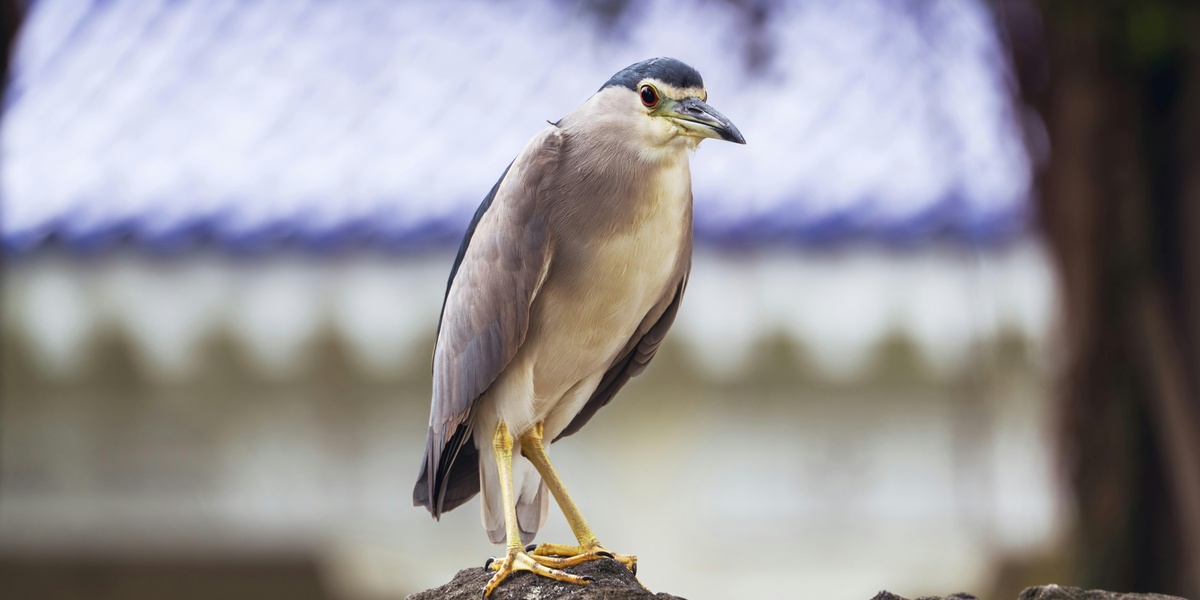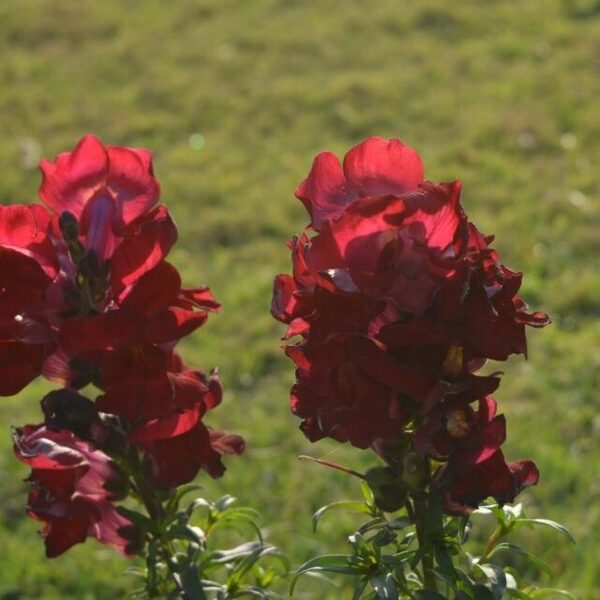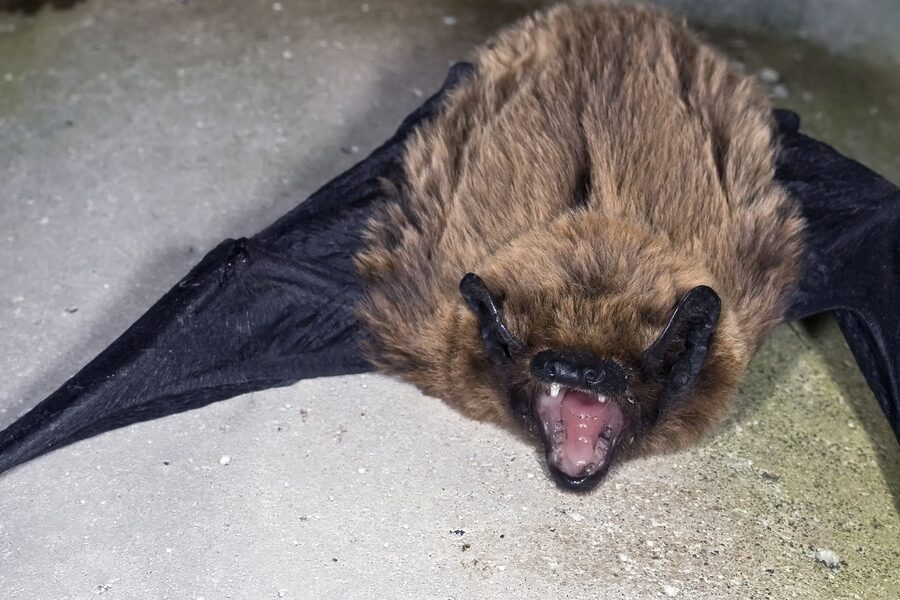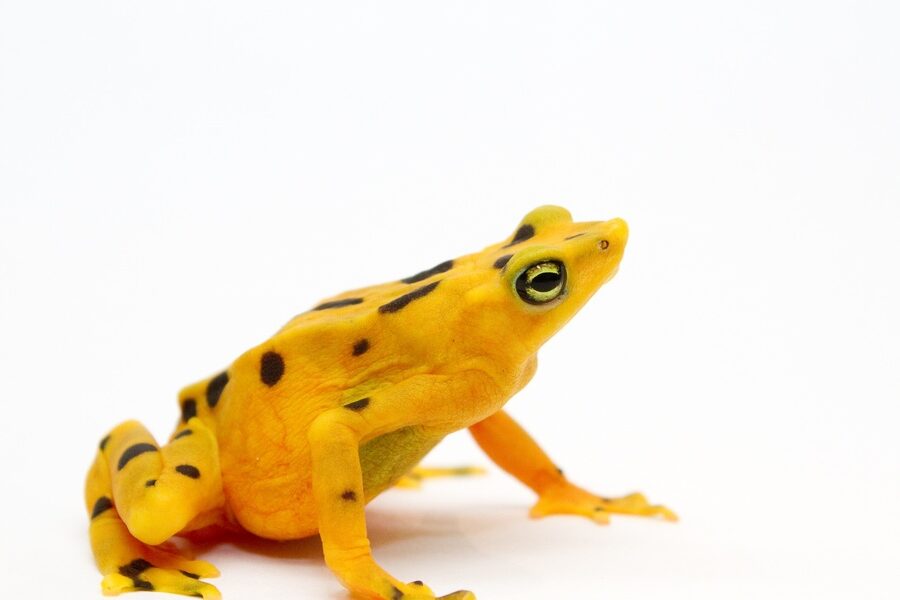Eswatini, a small yet incredibly diverse nation in Southern Africa, offers a remarkable array of natural beauty, and its birdlife is no exception. From dense riverine forests to expansive savannahs, the country’s varied ecosystems provide critical habitats for a stunning spectrum of avian species, making it a compelling destination for nature enthusiasts and birdwatchers.
To help you explore this rich biodiversity, we’ve compiled a list featuring 30 Birds of Eswatini. This selection spans a wide range of species, from the elusive African Finfoot to the strikingly colourful White-fronted Bee-eater. For each entry, you’ll find key details on its Scientific Name, Primary Habitat, and Conservation Status, all clearly organized for your reference below.
What makes Eswatini a notable destination for birdwatching?
Eswatini’s appeal to birdwatchers stems from its compact size combined with a remarkable range of habitats, including highveld, midveld, lowveld, and riverine forests. This ecological diversity supports a high density of species in a relatively small area. The country also boasts a significant number of endemic and near-endemic species, alongside a steady stream of migratory birds, offering year-round viewing opportunities for both common and rare finds.
When is the best time of year to go birdwatching in Eswatini?
The ideal time for birdwatching in Eswatini is generally during the summer months, from October to March. This period coincides with the arrival of intra-African and Palearctic migratory birds, significantly increasing the overall species count. It’s also when many resident species are in breeding plumage and more vocal, making them easier to spot and identify. While the dry winter months offer excellent visibility due to sparser vegetation, the summer provides the greatest diversity and activity.
Birds of Eswatini
| Common Name | Scientific Name | Primary Habitat | Conservation Status |
|---|---|---|---|
| Purple-crested Turaco | Gallirex porphyreolophus | Riverine woodland, evergreen forest | Least Concern |
| Southern Bald Ibis | Geronticus calvus | High-altitude grasslands, rocky cliffs | Vulnerable |
| Lilac-breasted Roller | Coracias caudatus | Savanna, open woodland | Least Concern |
| Narina Trogon | Apaloderma narina | Evergreen forests, riverine forest | Least Concern |
| Bateleur | Terathopius ecaudatus | Savanna, open woodland | Endangered |
| Secretarybird | Sagittarius serpentarius | Grassland, open savanna | Endangered |
| Southern Ground-Hornbill | Bucorvus leadbeateri | Savanna, woodland | Vulnerable |
| African Fish Eagle | Haliaeetus vocifer | Rivers, lakes, dams | Least Concern |
| African Finfoot | Podica senegalensis | Rivers, streams with dense vegetation | Least Concern |
| Knysna Turaco | Tauraco corythaix | Afromontane forest | Least Concern |
| Long-crested Eagle | Lophaetus occipitalis | Forest edges, woodland, plantations | Least Concern |
| Hamerkop | Scopus umbretta | Wetlands, rivers, marshes | Least Concern |
| Malachite Kingfisher | Corythornis cristatus | Ponds, slow-moving rivers with reeds | Least Concern |
| White-fronted Bee-eater | Merops bullockoides | Riverbanks, cliffs | Least Concern |
| Trumpeter Hornbill | Bycanistes bucinator | Evergreen forests, riverine woodland | Least Concern |
| African Paradise Flycatcher | Terpsiphone viridis | Woodland, forest, gardens | Least Concern |
| Southern Masked Weaver | Ploceus velatus | Savanna, woodland, gardens | Least Concern |
| Pin-tailed Whydah | Vidua macroura | Grassland, savanna, gardens | Least Concern |
| Jackal Buzzard | Buteo rufofuscus | Mountains, hills, grassland | Least Concern |
| Gorgeous Bushshrike | Telophorus viridis | Dense thickets, forest undergrowth | Least Concern |
| Crowned Lapwing | Vanellus coronatus | Open grassland, savanna | Least Concern |
| Fork-tailed Drongo | Dicrurus adsimilis | Savanna, woodland, farmland | Least Concern |
| Red-chested Cuckoo | Cuculus solitarius | Woodland, forest | Least Concern |
| African Green Pigeon | Treron calvus | Forest, riverine woodland | Least Concern |
| Southern Double-collared Sunbird | Cinnyris chalybeus | Forest edge, gardens | Least Concern |
| Blue Waxbill | Uraeginthus angolensis | Dry savanna, thornveld, gardens | Least Concern |
| Speckled Mousebird | Colius striatus | Savanna, thickets, gardens | Least Concern |
| Crowned Hornbill | Lophoceros alboterminatus | Forest, woodland, riverine bush | Least Concern |
| Olive Woodpecker | Dendropicos griseocephalus | Forest, dense woodland | Least Concern |
| African Pied Wagtail | Motacilla aguimp | Rivers, dams, suburban lawns | Least Concern |
Images and Descriptions
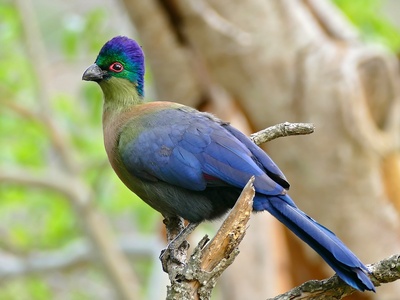
Purple-crested Turaco
The national bird of Eswatini, this spectacular bird has a vibrant purple crest and reveals crimson wing patches that flash brilliantly in flight.
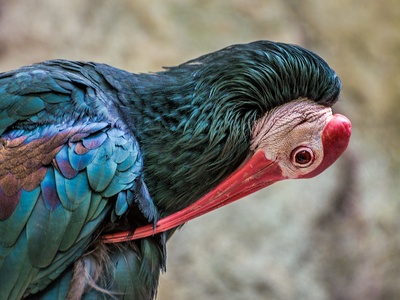
Southern Bald Ibis
A unique, glossy-black ibis with a featherless, bright red head. Often seen probing the ground in small groups in the highveld grasslands.
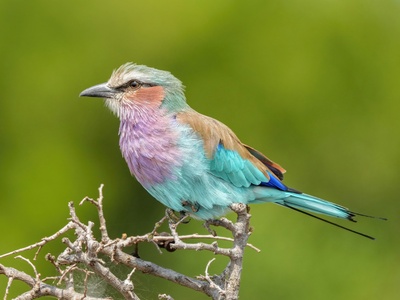
Lilac-breasted Roller
Unmistakably vibrant, this bird boasts a rainbow of colors. It’s often seen perched on prominent branches, hunting insects and small reptiles from above.
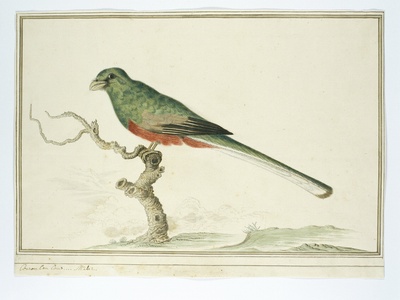
Narina Trogon
A shy and elusive gem of the forest, with iridescent green plumage on its back and a fiery red belly. Its mournful ‘hooo-hooo’ call often reveals its presence.
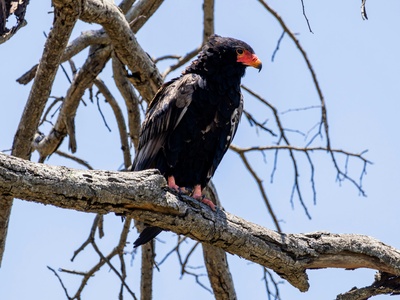
Bateleur
A striking eagle known for its short tail and rocking, acrobatic flight. Its name is French for ‘street-performer’, fitting its aerial prowess.
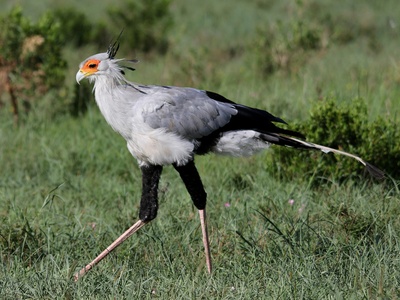
Secretarybird
A large, terrestrial bird of prey that looks like an eagle on stilts. It famously hunts snakes and other prey by stomping on them with its powerful legs.
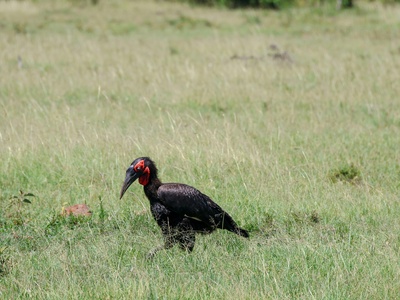
Southern Ground-Hornbill
Africa’s largest hornbill, this turkey-sized bird lives in family groups and forages on the ground. Known for its deep, booming calls that can be heard from far away.
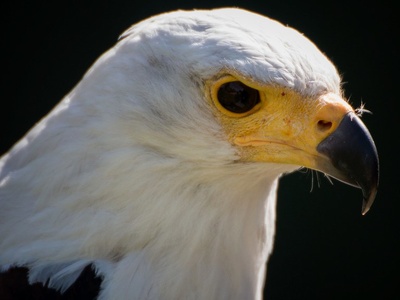
African Fish Eagle
Possesses one of Africa’s most iconic sounds, a loud, piercing cry. This majestic eagle is often seen perched near water, expertly snatching fish from the surface.
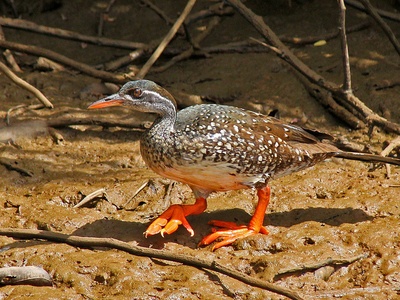
African Finfoot
A secretive and bizarre-looking waterbird with bright red, lobed feet. It is a prized sighting for birders along quiet, wooded waterways.
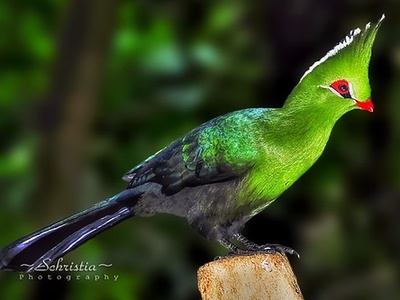
Knysna Turaco
A beautiful, mostly green bird with a prominent white-tipped crest. Like other turacos, it reveals stunning crimson underwings when it flies through the forest canopy.
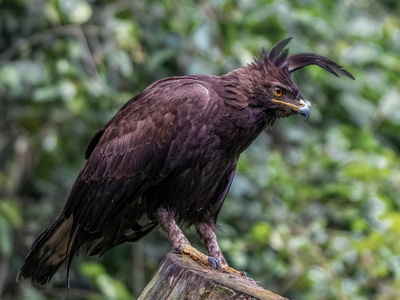
Long-crested Eagle
Easily identified by its long, floppy crest, even when perched. This eagle often sits conspicuously on telephone poles, scanning for rodents and small mammals.
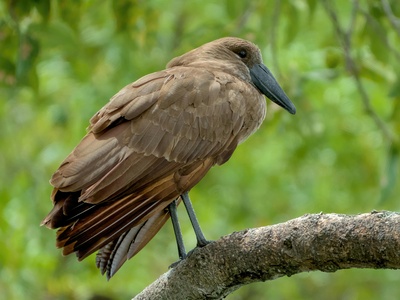
Hamerkop
A medium-sized, dull brown wading bird with a unique hammer-shaped head. It is famous for building enormous, messy stick nests that can weigh over 50 kg.
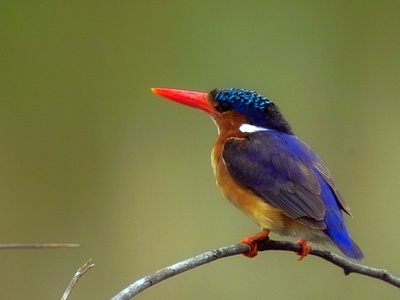
Malachite Kingfisher
A tiny, jewel-like kingfisher with brilliant metallic blue upperparts and a rufous belly. It dives for tiny fish from a low perch over the water.
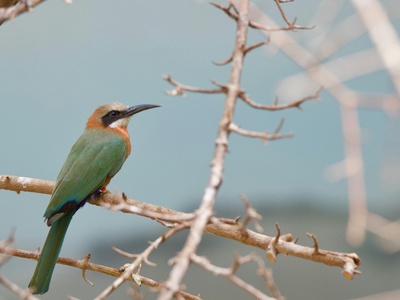
White-fronted Bee-eater
A highly social and colorful bird that nests in colonies dug into riverbanks. They are aerial acrobats, catching bees and other insects on the wing.
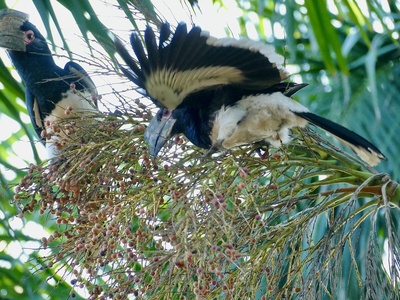
Trumpeter Hornbill
A large, black-and-white hornbill with a massive hollow casque on its bill. Its call sounds uncannily like a crying baby, echoing through the forest.

African Paradise Flycatcher
A stunning bird, the breeding male has incredibly long tail streamers that trail behind it. They are active and noisy, snatching insects in mid-air.
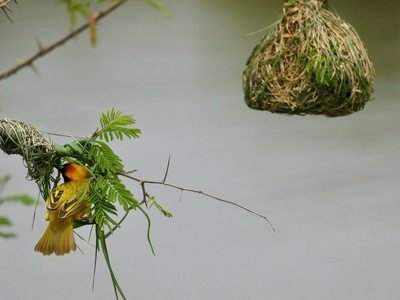
Southern Masked Weaver
A common and conspicuous bird, the bright yellow male is known for tirelessly weaving intricate, kidney-shaped nests from grass to attract a mate.
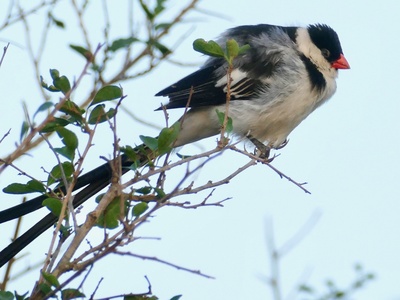
Pin-tailed Whydah
A fascinating brood parasite, the breeding male is unmistakable with his extremely long black tail feathers. He lays his eggs in the nests of waxbills.
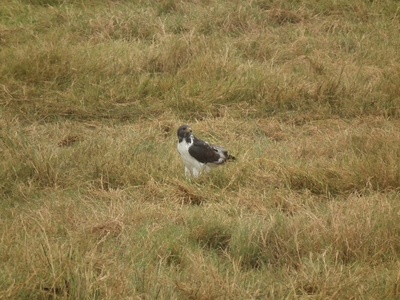
Jackal Buzzard
A robust, dark buzzard with a rich rufous chest and tail. Its call is a sharp ‘kyaah’ sound, similar to that of a black-backed jackal, hence its name.
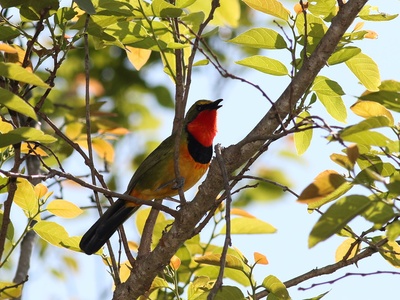
Gorgeous Bushshrike
More often heard than seen, this brightly colored bird has a beautiful, liquid, bubbling call. A flash of its scarlet throat is a rewarding sight for any birder.
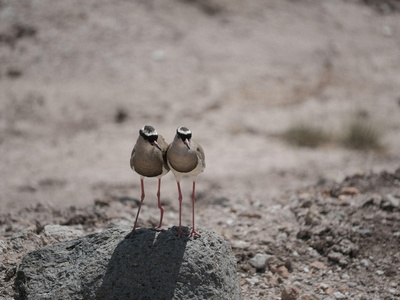
Crowned Lapwing
A noisy and conspicuous ground-dwelling bird with a distinct black crown circled by a white ‘halo’. Known for its loud, persistent ‘kie-riet’ alarm call.
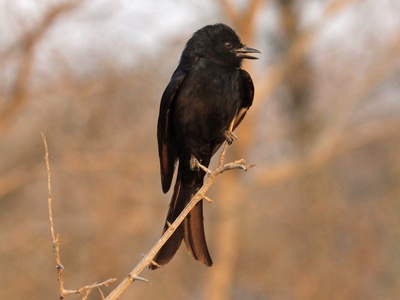
Fork-tailed Drongo
A glossy black bird with a distinctive forked tail. It is bold and aggressive, often mobbing larger birds of prey and cleverly mimicking other species’ calls.
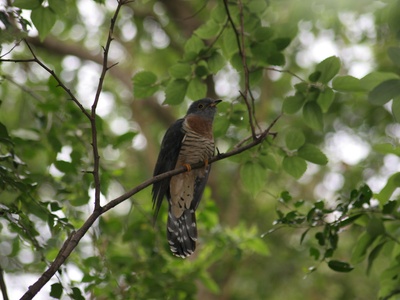
Red-chested Cuckoo
The herald of summer rain, its persistent, three-note ‘piet-my-vrou’ call is a classic sound of the African bush. It is a brood parasite of robins and chats.
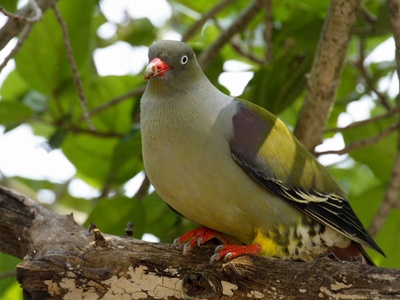
African Green Pigeon
A plump, yellowish-green pigeon often found clambering acrobatically among the branches of fruiting fig trees. Remarkably well-camouflaged when not moving.
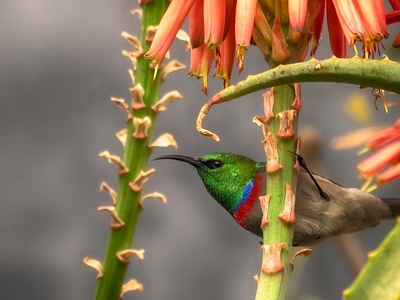
Southern Double-collared Sunbird
A tiny, energetic bird with iridescent green and blue upperparts and a striking red band on its chest. Feeds on nectar, hovering like a hummingbird at flowers.
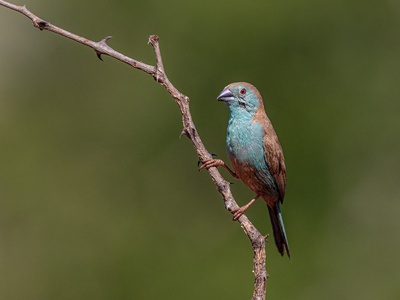
Blue Waxbill
A small, powder-blue finch with a brown back, often seen in small flocks foraging on the ground for grass seeds. A common and delightful garden visitor.
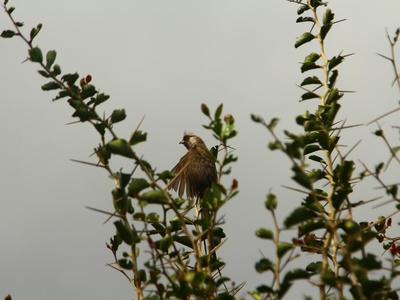
Speckled Mousebird
A drab, grey-brown bird with a long tail and a crest. They are highly social, often seen clambering through bushes in small groups like mice.
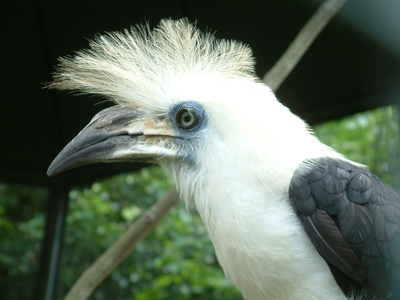
Crowned Hornbill
A common hornbill with a distinctive red bill and a small casque. Often seen in noisy, sociable flocks flying between fruiting trees with a ‘swooshing’ wing beat.
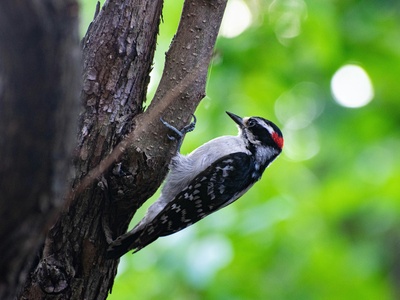
Olive Woodpecker
A striking woodpecker with a grey head, olive-green body, and a bright red rump that is especially visible in flight. Taps on trees for insects.
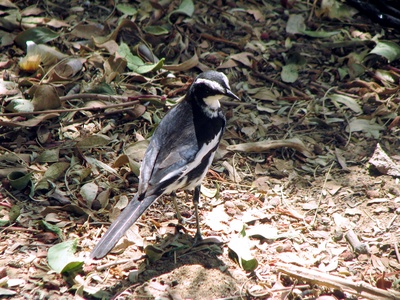
African Pied Wagtail
A familiar black-and-white bird that constantly wags its long tail up and down. Commonly found near water or in open, human-modified habitats.
